
![]()


The Cruise of the Snark, by Jack London
Chapter VI "A Royal Sport"
The Cruise of the Snark
by Jack London -
"A Royal Sport"
And suddenly, out there where a big smoker lifts skyward, rising like a sea-god from out of the welter of spume and churning white, on the giddy, toppling, overhanging and downfalling, precarious crest appears the dark head of a man. Swiftly he rises through the rushing white. His black shoulders, his chest, his loins, his limbs—all is abruptly projected on one’s vision. Where but the moment before was only the wide desolation and invincible roar, is now a man, erect, full-statured, not struggling frantically in that wild movement,
And one sits and thinks of Tristram’s last wrestle with the sea on that fatal morning; and one thinks further, to the fact that that Kanaka has done what Tristram never did, and that he knows a joy of the sea that Tristram never knew. And still further one thinks. It is all very well, sitting here in cool shade of the beach, but you are a man, one of the kingly species, and what that Kanaka can do, you can do yourself. Go to. Strip off your clothes that are a nuisance in this mellow clime. Get in and wrestle with the sea; wing your heels with the skill and power that reside in you; bit the sea’s breakers, master them, and ride upon their backs as a king should.
And that is how it came about that I tackled surf-riding. And now that I have tackled it, more than ever do I hold it to be a royal sport. But first let me explain the physics of it. A wave is a communicated agitation. The water that composes the body of a wave does not move. If it did, when a stone is thrown into a pond and the ripples spread away in an ever widening circle, there would appear at the centre an ever increasing hole. No, the water that composes the body of a wave is stationary. Thus, you may watch a particular portion of the ocean’s surface and you will see the sane water rise and fall a thousand times to the agitation communicated by a thousand successive waves. Now imagine this communicated agitation moving shoreward. As the bottom shoals, the lower portion of the wave strikes land first and is stopped. But water is fluid, and the upper portion has not struck anything, wherefore it keeps on communicating its agitation, keeps on going. And when the top of the wave keeps on going, while the bottom of it lags behind, something is bound to happen. The bottom of the wave drops out from under and the top of the wave falls over, forward, and down, curling and cresting and roaring as it does so. It is the bottom of a wave striking against the top of the land that is the cause of all surfs.
But the transformation from a smooth undulation to a breaker is not abrupt except where the bottom shoals abruptly. Say the bottom shoals gradually for from quarter of a mile to a mile, then an equal distance will be occupied by the transformation. Such a bottom is that off the beach of Waikiki, and it produces a splendid surf-riding surf. One leaps upon the back of a breaker just as it begins to break, and stays on it as it continues to break all the way in to shore.
And now to the particular physics of surf-riding. Get out on a flat board, six feet long, two feet wide, and roughly oval in shape. Lie down upon it like a small boy on a coaster and paddle with your hands out to deep water, where the waves begin to crest. Lie out there quietly on the board. Sea after sea breaks before, behind, and under and over you, and rushes in to shore, leaving you behind. When a wave crests, it gets steeper. Imagine yourself, on your hoard, on the face of that steep slope. If it stood still, you would slide down just as a boy slides down a hill on his coaster. "But," you object, "the wave doesn’t stand still." Very true, but the water composing the wave stands still, and there you have the secret. If ever you start sliding down the face of that wave, you’ll keep on sliding and you’ll never reach the bottom. Please don’t laugh. The face of that wave may be only six feet, yet you can slide down it a quarter of a mile, or half a mile, and not reach the bottom. For, see, since a wave is only a communicated agitation or impetus, and since the water that composes a wave is changing every instant, new water is rising into the wave as fast as the wave travels. You slide down this new water, and yet remain in your old position on the wave, sliding down the still newer water that is rising and forming the wave. You slide precisely as fast as the wave travels. If it travels fifteen miles an hour, you slide fifteen miles an hour. Between you and shore stretches a quarter of mile of water. As the wave travels, this water obligingly heaps itself into the wave, gravity does the rest, and down you go, sliding the whole length of it. If you still cherish the notion, while sliding, that the water is moving with you, thrust your arms into it and attempt to paddle; you will find that you have to be remarkably quick to get a stroke, for that water is dropping astern just as fast as you are rushing ahead.
And now for another phase of the physics of surf-riding. All rules have their exceptions. It is true that the water in a wave does not travel forward. But there is what may be called the send of the sea. The
I deserted the cool shade, put on a swimming suit, and got hold of a surf-board. It was too small a board. But I didn’t know, and nobody told me. I joined some little Kanaka boys in shallow water, where the breakers were well spent and small—a regular kindergarten school. I watched the little Kanaka boys. When a likely-looking breaker came along, they flopped upon their stomachs on their boards, kicked like mad with their feet, and rode the breaker in to the beach. I tried to emulate them. I watched them, tried to do everything that they did, and failed utterly. The breaker swept past, and I was not on it. I tried again and again. I kicked twice as madly as they did, and failed. Half a dozen would be around. We would all leap on our boards in front of a good breaker. Away our feet would churn like the stern-wheels of river steamboats, and away the little rascals would scoot while I remained in disgrace behind.
I tried for a solid hour, and not one wave could I persuade to boost me shoreward. And then arrived a friend, Alexander Hume Ford, a globe trotter by profession, bent ever on the pursuit of sensation. And he had found it at Waikiki. Heading for Australia, he had stopped off for a week to find out if there were any thrills in surf-riding, and he had become wedded to it. He had been at it every day for a month and could not yet see any symptoms of the fascination lessening on him. He spoke with authority.
"Get off that board," he said. "Chuck it away at once. Look at the way you’re trying to ride it. If ever the nose of that board hits bottom, you’ll be disembowelled. Here, take my board. It’s a man’s size."
I am always humble when confronted by knowledge. Ford knew. He showed me how properly to mount his board. Then he waited for a good breaker, gave me a shove at the right moment, and started me in. Ah, delicious moment when I felt that breaker grip and fling me.
On I dashed, a hundred and fifty feet, and subsided with the breaker on the sand. From that moment I was lost. I waded back to Ford with his board. It was a large one, several inches thick, and weighed all of seventy-five pounds. He gave me advice, much of it. He had had no one to teach him, and all that he had laboriously learned in several weeks he communicated to me in half an hour. I really learned by proxy. And inside of half an hour I was able to start myself and ride in. I did it time after time, and Ford applauded and advised. For instance, he told me to get just so far forward on the board and no farther. But I must have got some farther, for as I came charging in to land, that miserable board poked its nose down to bottom, stopped abruptly, and turned a somersault, at the same time violently severing our relations. I was tossed through the air like a chip and buried ignominiously under the downfalling breaker. And I realized that if it hadn’t been for Ford, I’d have been disembowelled. That particular risk is part of the sport, Ford says. Maybe he’ll have it happen to him before he leaves Waikiki, and then, I feel confident, his yearning for sensation will be satisfied for a time.
When all is said and done, it is my steadfast belief that homicide is worse than suicide, especially if, in the former case, it is a woman. Ford saved me from being a homicide. "Imagine your legs are a rudder," he said. "Hold them close together, and steer with
"To-morrow," Ford said, "I am going to take you out into the blue water."
I looked seaward where he pointed, and saw the great smoking combers that made the breakers I had been riding look like ripples. I don’t know what I might have said had I not recollected just then that I was one of a kingly species. So all that I did say was, "All right, I’ll tackle them to-morrow."
The water that rolls in on Waikiki Beach is just the same as the water that laves the shores of all the Hawaiian Islands; and in ways, especially from the swimmer’s standpoint, it is wonderful water. It is cool enough to be comfortable, while it is warm enough to permit a swimmer to stay in all day without experiencing a chill. Under the sun or the stars, at high noon or at midnight, in midwinter or in midsummer, it does not matter when, it is always the same temperature—not too warm, not too cold, just right. It is wonderful water, salt as old ocean itself, pure and crystal-clear. When the nature of the water is considered, it is not so remarkable after all that the Kanakas are one of the most expert of swimming races.
So it was, next morning, when Ford came along, that I plunged into the wonderful water for a swim of indeterminate length. Astride of our surf-boards, or, rather, flat down upon them on our stomachs, we paddled out through the kindergarten where the little Kanaka boys were at play. Soon we were out in deep water where the big smokers came roaring in. The mere struggle with them, facing them and paddling seaward over them and through them, was sport enough in itself. One had to have his wits about him, for it was a battle in which mighty blows were struck, on one side, and in which cunning was used on the other side—a struggle between insensate force and intelligence. I soon learned a bit. When a breaker curled over my head, for a swift instant I could see the light of day through its emerald body; then down would go my head, and I would clutch the board with all my strength. Then would come the blow, and to the onlooker on shore I would be blotted out. In reality the board and I have passed through the crest and emerged in the respite of the other side. I should not recommend those smashing blows to an invalid or delicate person. There is weight behind them, and the impact of the driven water is like a sandblast. Sometimes one passes through half a dozen combers in quick succession, and it is just about that time that he is liable to discover new merits in the stable land and new reasons for being on shore.
Out there in the midst of such a succession of big smoky ones, a third man was added to our party, one Freeth. Shaking the water from my eyes as I emerged from one wave and peered ahead to see what the next one looked like, I saw him tearing in on the back of it, standing upright on his board, carelessly poised, a young god bronzed with sunburn. We went through the wave on the back of which he rode. Ford called to him. He turned an airspring from his wave, rescued his board from its maw, paddled over to us and joined Ford
The whole method of surf-riding and surf-fighting, learned, is one of non-resistance. Dodge the blow that is struck at you. Dive through the wave that is trying to slap you in the face. Sink down, feet first, deep under the surface, and let the big smoker that is trying to smash you go by far overhead. Never be rigid. Relax. Yield yourself to the waters that are ripping and tearing at you. When the undertow catches you and drags you seaward along the bottom, don’t struggle against it. If you do, you are liable to be drowned, for it is stronger than you. Yield yourself to that undertow. Swim with it, not against it, and you will find the pressure removed. And, swimming with it, fooling it so that it does not hold you, swim upward at the same time. It will be no trouble at all to reach the surface.
The man who wants to learn surf-riding must be a strong swimmer, and he must be used to going under the water.
One slides down the face of a breaker on his surf-board, but he has to get started to sliding. Board and rider must be moving shoreward at a good rate before the wave overtakes them. When you see the wave coming that you want to ride in, you turn tail to it and paddle shoreward with all your strength, using what is called the windmill stroke. This is a sort of spurt performed immediately in front of the wave. If the board is going fast enough, the wave accelerates it, and the board begins its quarter-of-a-mile slide.
It was my second day at surf-riding, and I was quite proud of myself. I stayed out there four hours, and when it was over, I was resolved that on the morrow I’d come in standing up. But that resolution paved a distant place. On the morrow I was in bed. I was not sick, but I was very unhappy, and I was in bed. When describing the wonderful water of Hawaii I forgot to describe the wonderful sun of Hawaii. It is a tropic sun, and, furthermore, in the first part of June, it is an overhead sun. It is also an insidious, deceitful sun. For the first time in my life I was sunburned unawares. My arms, shoulders, and back had been burned many times in the past and were tough; but not so my legs. And for four hours I had exposed the tender backs of my legs, at right-angles, to that perpendicular Hawaiian sun. It was not until after I got ashore that I discovered the sun had touched me. Sunburn at first is merely warm; after that it grows intense and the blisters come out. Also, the joints, where the skin wrinkles, refuse to bend. That is why I spent the next day in bed. I couldn’t walk. And that is why, to-day, I am writing this in bed. It is easier to than not to. But to-morrow, ah, to-morrow, I shall be out in that wonderful water, and I shall come in standing up, even as Ford and Freeth. And if I fail to-morrow, I shall do it the next day, or the next. Upon one thing I am resolved: the Snark shall not sail from Honolulu until I, too, wing my heels with the swiftness of the sea, and become a sun-burned, skin-peeling Mercury.


Recent Comments
- Ray Chamberlain on Barry Morrison Inter Island Surf Shop
- Wahinkpe Topa on The Cruise of the Snark, by Jack London – Chapter VI A Royal Sport
- Bob Prichard on Neva eva go Ewa
- bigwave on The Cruise of the Snark, by Jack London – Chapter VI A Royal Sport
- George Freeth, the man who brought surfing to Venice | California Sun on The Cruise of the Snark, by Jack London – Chapter VI A Royal Sport
- Steve Lissau on Eric Haas On Surfers Journal® and on Inter-Island Surf Shop®
- Arthur Wong on Neva eva go Ewa
- bob macelwee on Neva eva go Ewa
- Arthur or Art Saguid on Inter-Island Surfshop® Boards
- John Baszak on Neva eva go Ewa
- Kris on Neva eva go Ewa
- Kelly Egelhoff on Neva eva go Ewa
- Jean Aycock on Neva eva go Ewa
- Mellonee Culp on Inter-Island Surf Shop “The Store” Gallery
- Mark Moon on Inter-Island Surf Shop “The Store” Gallery
- TJ B on Neva eva go Ewa
- Gwenyth Jett on Neva eva go Ewa
- Bill Cauble on Neva eva go Ewa
- Bill Cauble on Neva eva go Ewa
- Bill Cauble on Neva eva go Ewa
- Richard Capp on Neva eva go Ewa
- Gene on Inter-Island Surf Shop “The Store” Gallery
- ROBERT GARRABRANT on Neva eva go Ewa
- Richard Capp on Neva eva go Ewa
- Marcus on Honolulu Boards fromInter-Island Surfshop
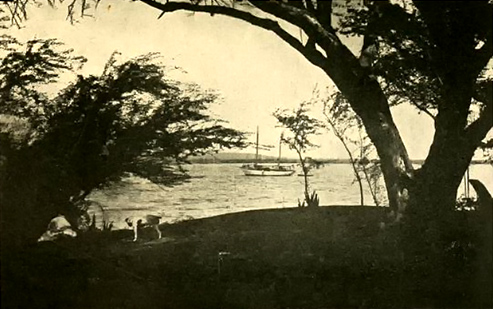
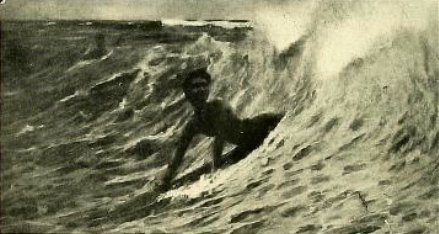
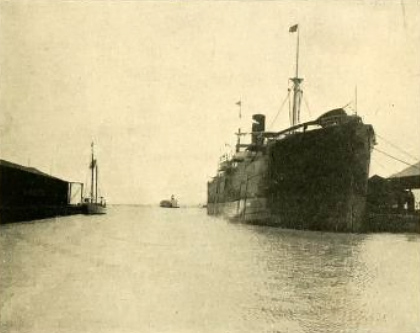


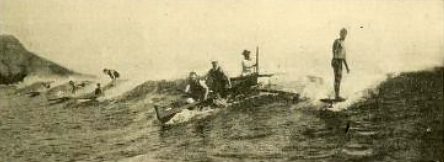
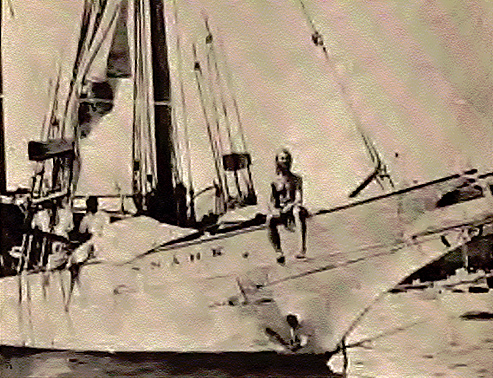
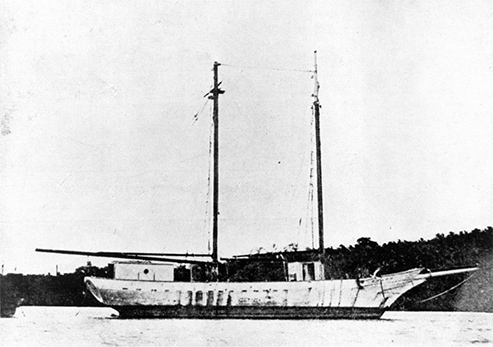
Jack London has been often misinterpreted as a white supremacist but he was in fact a believer in the Indigenous human’s superiority to the “civilized” white man.
George Freeth, the man who brought surfing to Venice | California Sun
… in the islands, became entranced by Freeth and brought him to the world’s attention. In a widely published account, the San Francisco author wrote: “I saw him tearing in on the back of [a wave], standing upright …
https://www.californiasun.co/george-freeth-the-man-who-brought-surfing-to-venice
Pingback: George Freeth, the man who brought surfing to Venice | California Sun